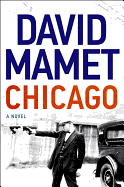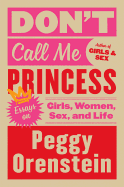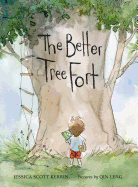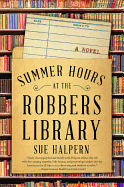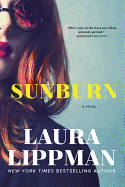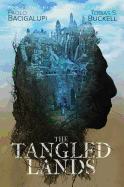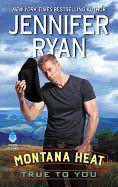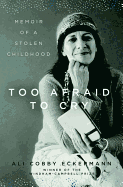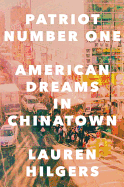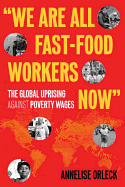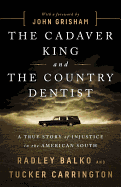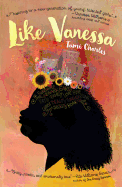Tuesday, March 20, 2018
Spies are paradoxically famous for flying under the radar. Both their livelihood and their success depend on remaining undetected. For women, their gender often provides an additional layer of disguise: many men overlook women or doubt them to be capable of a spy's cunning and deceit. (They're wrong.)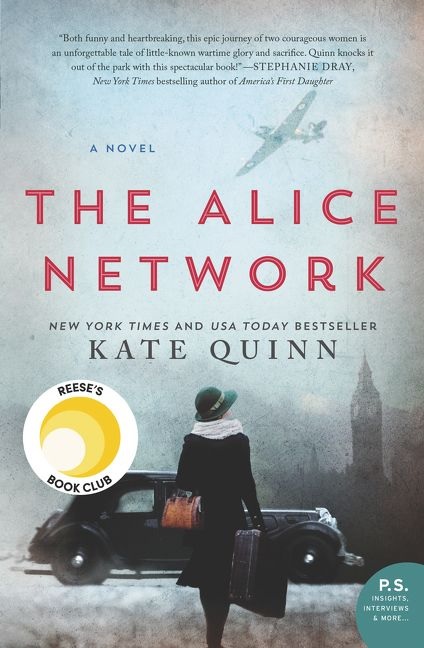 Kate Quinn's 2017 novel The Alice Network (Morrow, $16.99) brings to life the work of female spies in occupied France during World War I. The titular network revolves around whip-smart Alice Dubois (an alias, of course), who smuggles information up the Allied ranks via hairpins, skirt seams and her web of crackerjack female agents. Though Quinn's protagonist Eve Gardiner is fictional, "Alice" and her compatriots really existed, and the novel is a fitting homage to their courage.
Kate Quinn's 2017 novel The Alice Network (Morrow, $16.99) brings to life the work of female spies in occupied France during World War I. The titular network revolves around whip-smart Alice Dubois (an alias, of course), who smuggles information up the Allied ranks via hairpins, skirt seams and her web of crackerjack female agents. Though Quinn's protagonist Eve Gardiner is fictional, "Alice" and her compatriots really existed, and the novel is a fitting homage to their courage. Spanish seamstress Sira Quiroga finds herself swept up and then abandoned by a charming man in Maria Duenas's powerful novel The Time in Between (Atria, $17). Stranded in Morocco, Sira hones her sewing skills and becomes a successful couturier whose designs eventually catch the eye of Nazi diplomats' wives. As war swirls on the Continent, first in Spain and then everywhere, Sira passes coded information through her elegant gowns, stitching herself into the complex worlds of high fashion and espionage.
Spanish seamstress Sira Quiroga finds herself swept up and then abandoned by a charming man in Maria Duenas's powerful novel The Time in Between (Atria, $17). Stranded in Morocco, Sira hones her sewing skills and becomes a successful couturier whose designs eventually catch the eye of Nazi diplomats' wives. As war swirls on the Continent, first in Spain and then everywhere, Sira passes coded information through her elegant gowns, stitching herself into the complex worlds of high fashion and espionage. 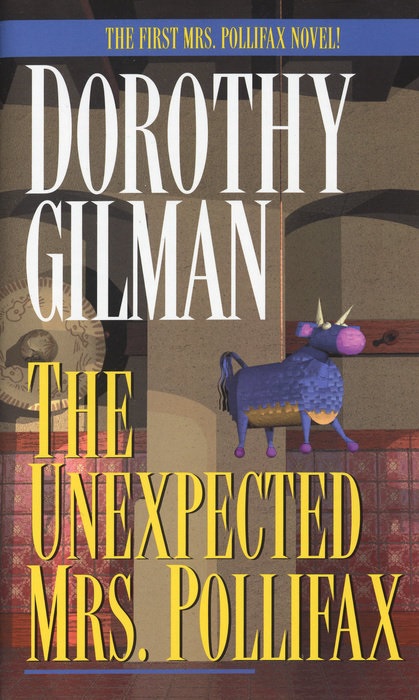 Mrs. Virgil (Emily) Pollifax is used to being underestimated: as a retired widow, she's also downright bored. Presenting herself at CIA headquarters in Langley, Va., she argues her way into a position as an undercover agent, launching an unorthodox career that has her crisscrossing continents throughout the Cold War (though her neighbors never know it). Dorothy Gilman's series, which spans 14 novels, lives up to the name of its first book, The Unexpected Mrs. Pollifax (Random House, $7.99), in delightful fashion.
Mrs. Virgil (Emily) Pollifax is used to being underestimated: as a retired widow, she's also downright bored. Presenting herself at CIA headquarters in Langley, Va., she argues her way into a position as an undercover agent, launching an unorthodox career that has her crisscrossing continents throughout the Cold War (though her neighbors never know it). Dorothy Gilman's series, which spans 14 novels, lives up to the name of its first book, The Unexpected Mrs. Pollifax (Random House, $7.99), in delightful fashion.
In fiction as in real life, female spies are often underrated--but their stories are reliably fascinating. --Katie Noah Gibson, blogger at Cakes, Tea and Dreams
Summer Hours at the Robbers Library
by Sue Halpern
The reclusive librarian of a "declining, flea-bitten" New Hampshire town, a mysterious stranger and an endearing adolescent sentenced to a summer of community service could have come together in a formulaic light read. But Sue Halpern (A Dog Walks into a Nursing Home) writes in layers, and these three protagonists of Summer Hours at the Robbers Library reveal deeper truths about themselves and contemporary life.
The novel opens with a memory, of Kit Jarvis and her boyfriend on a trajectory to marriage. But in the first chapter, June 7-13, 2010, it's apparent she came to Riverton alone. She works as a reference librarian and is now also in charge of Sunny, an adolescent carrying out her sentence for attempting to steal a dictionary. As they get acquainted, their stories surface: Kit's through imaginary conversations with a past therapist, and Sunny's as she reflects on her furtive parents and her transient, "no-schooling" life. By late June an attractive stranger named Rusty is monopolizing the library computer, and Kit, Sunny and the library staff are speculating about him. In time questions arise: What drove Kit to Riverton? Why are Sunny's parents evasive about their past? What is Rusty researching?
Sue Halpern cleverly structures the novel by weeks of the summer. The fun she has with character development is engaging; chapters are sometimes first-person and sometimes third-person, giving varied perspectives. She slowly reveals the ways Kit, Sunny and Rusty are resilient victims of personal and economic strife as they find comfort and a makeshift family together in the shelter of the Riverton Library. Literary quotes add to the ambience: Emily Dickinson, John Keats, Marianne Moore and others seem to offer advice from the stacks. --Cheryl Krocker McKeon, manager, Book Passage, San Francisco
Discover: Three unlikely characters find friendship among the shelves of a fading New England library one summer.
Mystery & Thriller
Chicago
by David Mamet
Crackling with colorful, truncated street dialogue, David Mamet's historical novel Chicago exhibits the kind of talk-talk drama that earned his plays (Glengarry Glen Ross, Speed-the-Plow) a Pulitzer Prize and Tony nominations and his film screenplays (The Verdict, Wag the Dog) a couple Oscar nominations. Set in the rough and tumble city of Mamet's youth, Chicago is the story of Mike Hodges, a hungry young Tribune reporter working the city desk in the 1920s. Capone and the Italian Outfit ran the South Side; O'Banion and the Irish mob ruled the North. When his Irish girlfriend is murdered during a tryst in his barebones flat, the guilt-ridden Hodges tenaciously pursues her killer. His snooping leads up and down the shores of Lake Michigan, through the Windy City's speakeasies and whorehouses, and into cop bars and bootlegger supper clubs--ultimately uncovering an elaborate scheme to swipe guns to sell to the Irish Republican Army.
A dialogue-driven crime novel, Chicago does for Mamet's historical hometown what George V. Higgins did for Boston. Gangsters sling derogatory ethnic epithets at their fellow immigrants. Peekaboo, the see-everything, know-everything Madame, disdains her clients and chastens her girls. Hodges and his colleagues are a cynical tribe. His editor muzzles his idealism: "News is that which makes its consumer self-important, angry, or sufficiently whatever the hell to turn to page twelve, and turning, encounter the ad for the carpet sale." With Chicago, Mamet's playing another winning hand. --Bruce Jacobs, founding partner, Watermark Books & Cafe, Wichita, Kan.
Discover: Mamet's latest is a rowdy historical novel featuring a streetwise newspaperman seeking revenge among the mobsters, prostitutes and barkeeps of 1920s Chicago.
Sunburn
by Laura Lippman
"It's the sunburned shoulders that get him. Pink, peeling.... Why would a redhead well into her thirties make such a rookie mistake? And why is she here, sitting on a barstool... in a town where strangers seldom stop on a Sunday evening?" Adam is pondering these questions at the start of Laura Lippman's Sunburn, as he gazes at a woman in a bar in Belleville, Del. He strikes up a conversation with her, and thus begins a summer that becomes too hot--and deadly--for Adam to handle.
Polly has left her husband and kid, for reasons that are initially unclear. She keeps personal details close to the vest, but so does Adam. This doesn't prevent them from falling into a scorching affair, but as their passion escalates, their respective secrets threaten to destroy them and claim collateral damage.
The inspiration from James M. Cain's masterpieces (The Postman Always Rings Twice, Double Indemnity, etc.) is evident in Lippman's prose. She takes the rhythms and tone of a 1930s hardboiled detective novel and gives them a contemporary spin. Fans of classic noir will recognize familiar tropes--the beautiful dame who can't be trusted but is nonetheless irresistible, the tough guy who believes he's her savior--and perhaps not be surprised by some turns of events. It's that familiarity with the genre, however, that partly makes Sunburn mesmerizing. Just like Adam being drawn to Polly, readers who suspect bad news still won't be able to stay away. --Elyse Dinh-McCrillis, blogger at Pop Culture Nerd
Discover: A man and woman engage in a scorching summer affair, with deadly results.
Science Fiction & Fantasy
The Tangled Lands
by Tobias S. Buckell and Paolo Bacigalupi
The Tangled Lands by Paolo Bacigalupi (The Water Knife) and Tobias S. Buckell (Arctic Rising) is a multi-layered fantasy about the economic and environmental devastation wrought by magic. Four connected novellas show acts of rebellion toward tyrants manipulating a geopolitical crisis.
In and around the city of Khaim, overuse of magic created an environmental catastrophe. Bramble, a plant that buries everything, puts those who touch it into a deep and ultimately deadly "bramble-kissed" coma, and use of magic releases a toxin that causes it to spread with horrifying speed. In this world, even a benign spell--soothing an infant's colic, for example--is outlawed. Soldiers kill anyone who uses magic. Against this backdrop, Duke Malabaz exploits an alchemist who has discovered how to destroy bramble, allowing magic to be "a monopoly held tight in the fist of the man who lived far above them all."
The resistance forms with Tana, who with the fury of "angry, venomous mothers" forms a woman's army to search for kidnapped children; Sofija, a blacksmith's daughter whose defiance and strength help her survive; and Mop, a boy who desperately tries to save his bramble-kissed sister from sexual exploitation.
Bacigalupi and Buckell have individually explored the effect of mankind's disastrous relationship with the environment in other speculative novels. Together in The Tangled Lands, they create a damaged world that is frightening in its implications for human suffering. Readers looking for dystopian fantasy with strong female characters will devour the stories of this world and eagerly wait for more. --Cindy Pauldine, bookseller, the river's end bookstore, Oswego, N.Y.
Discover: The Tangled Lands is a dystopian fantasy about survival in the midst of magical treachery and environmental devastation.
Romance
Montana Heat: True to You
by Jennifer Ryan
Determined to put the notorious drug cartel enforcer "Iceman" behind bars, the DEA's Dawson King goes undercover--spending five months in prison. When King (now known as "Flash" because of his fast reflexes in prison brawls) is released on good behavior, he approaches Cara Potter, the Iceman's daughter. Cara purportedly has nothing to do with the drug trade and often hires felons, helping them get back on their feet.
Flash gets a job in her coffee shop and soon realizes that Cara is as innocent as she appears to be. Her life has been plagued by violence as a result of her father's occupation, leaving her suspicious of everyone, and Flash wants to do nothing more than convince Cara that he's being honest about his burgeoning feelings for her. But she doesn't even know his real name--and he's trying to find evidence to arrest her father. Can Flash get Cara to trust him and fulfill his DEA mission to take down Iceman's cartel at the same time?
Jennifer Ryan (Her Renegade Rancher, His Cowboy Heart) continues the Montana Heat saga with True to You. With a dramatic plot, lots of action and a full cast of characters, this installment is a quick and sexy read. Cara and Flash's complicated relationship gets even trickier when other bad guys come onto the scene, keeping the reader guessing about the denouement. Romantic suspense readers are sure to love this latest fast-paced novel. --Jessica Howard, bookseller at Bookmans, Tucson, Ariz.
Discover: A sexy DEA agent goes undercover and ends up falling for a cartel boss's daughter.
Biography & Memoir
Too Afraid to Cry: Memoir of a Stolen Childhood
by Ali Cobby Eckermann
Ali Cobby Eckermann (Inside My Mother) is part of the Stolen Generation, children of Aboriginal descent forced by the Australian government to leave their birth families between 1905 and 1969. In Too Afraid to Cry, Eckermann gives voice to the estimated 100,000 victims of this tragic period in Australian history.
Raised on a farm by loving German Lutheran parents with their other children, Eckermann describes her early childhood as nearly idyllic: visits from extended family, sing-alongs with relatives, time spent caring for the farm animals and exploring nature. Yet she carried dark, damaging secrets; at age seven, she was sexually abused by a family acquaintance. That abuse--as well as assaults and bullying by others--led Eckermann into self-destructive behavior that masked her feelings of loss and trauma. She spent her teen years "sprinkling LSD and speed through my diet of alcohol and marijuana," becoming pregnant at 18 and giving her baby up for adoption. Eckermann would eventually search for, and become reunited with, her son, as well with as her Aboriginal family, who shared with her the circumstances of her birth and their collective grief upon learning she had been stolen.
Interspersed between her stark narrative are raw poems reflecting a simmering anger, ferocity and the strength that results from understanding one's heritage. In 2017, Eckermann was awarded the Windham-Campbell Prize for poetry.
In the dedication of Too Afraid to Cry, Eckermann writes that her memoir is "a story of healing not burdened by blame." Her focus remains solidly on the former while never wavering from the many ways her childhood was stolen. --Melissa Firman, writer, editor and blogger at melissafirman.com
Discover: A poetic memoir by an Aboriginal woman who was stolen as a child from her birth family.
Social Science
Don't Call Me Princess: Essays on Girls, Women, Sex, and Life
by Peggy Orenstein
Peggy Orenstein's work might be described as a reckoning with all things "pink." She has often cast her gaze on girlhood and its trappings: princesses, Barbies, Hannah Montana. But just as frequently, she reports on less marketable, more divisive elements of female experience: teen pregnancy, fertility, abortion access, genetic testing and--again with the pink--breast cancer and its omnipresent ribbons.
Orenstein (Girls and Sex, Cinderella Ate My Daughter) sets her sights on these subjects and more in Don't Call Me Princess: Essays on Girls, Women, Sex, and Life. She takes on noteworthy women, women's bodies, motherhood, girlhood--and, ultimately, boys: "How to Be a Man in the Age of Trump."
Orenstein punctuates many of her incisive points with wry wit and fresh humor. Breast cancer support groups offer "foxhole sisterhood." Regarding princesses: "To call princesses a 'trend' among girls is like calling Harry Potter a book."
She prefaces each piece with a reflection on her frame of mind during its composition and her current thoughts on the issue. In the preface for her first story on breast cancer, she reflects, "While I repudiate science in this essay, I stand by its emotional truth." And her emotional truths cut deep. After a round of surprising medical results, a member of Orenstein's medical team tells her, "I'm afraid this is a bit like peeling an onion." So, too, is Orenstein's writing. It's layered. It stings. It may very well make you cry--and then do something with it. --Katie Weed, freelance writer and reviewer
Discover: Feminist cultural critic Peggy Orenstein shares provocative and personal essays culled from her decades-long career as an advocate for women.
Patriot Number One: American Dreams in Chinatown
by Lauren Hilgers
Patriot Number One offers an intimate portrait of one immigrant family's struggles to assimilate into U.S. culture while examining the harsh realities that Chinese immigrants face in pursuing the American dream.
Zhuang Liehong was a 30-something activist and dreamer from the Guangdong village of Wukan. He became acquainted with journalist Lauren Hilgers while she was reporting on the aftermath of a 2011 protest that swept through the village. Using the code name "Patriot Number One" on social media, Zhuang hatched a plan to obtain tourist visas to the United States, with the intention of seeking political asylum in "a country of justice and freedom, a place with values that paralleled his own." Two years later, Zhuang and his wife, Little Yan, unexpectedly show up at Hilgers's doorstep in the U.S., seeking her assistance in settling in Flushing, N.Y. This begins a journey of discovery, in which Hilgers documents the hardships and turmoil that many immigrants within the community face while settling in the United States. She also examines the roles that infrastructure and networks established immigrants play in helping their countrymen assimilate.
Despite Hilger's closeness to Zhuang and Little Yan, she maintains a detached distance as the astute and attentive ethnographer observing her subjects. Their lives, she comes to discover, are not so different from the lives of hardworking U.S.-born citizens living paycheck-to-paycheck in search of an American dream that moves in either direction depending on where the political tide falls. Hilgers captures these harsh realities and more in this empathetic and timely tale of exile and the search for new beginnings. --Nancy Powell, freelance writer and technical consultant
Discover: Lauren Hilgers reports on how the harsh realities of assimilation have affected the American dream for a new generation of Chinese immigrants seeking fresh starts.
'We Are All Fast-Food Workers Now': The Global Uprising Against Poverty Wages
by Annelise Orleck
"This is not a story about other people." Historian and author Annelise Orleck (Storming Caesar's Palace) toured the world to interview workers and activists for "We Are All Fast-Food Workers Now" a vivid, well-grounded survey of the new global labor movement. The movement, she says, is a reaction against the spread of "free" capitalism as a force for prosperity and freedom. Those who have done most of the spreading "only espoused certain kinds of freedom: from trade barriers and labor regulations; from robust taxes to redistribute wealth and fund education, infrastructure and health care; from environmental regulations that might limit profits as they slowed climate change and reduced poisons in our air and water." Orleck offers historical context and citations, and she is also clear about her strong sympathies. "I make no pretense of objectivity." The people she profiles are all fighting for similar things--respect, safety, a living wage, opportunities for their children--and collaborating across cultures, languages and national boundaries.
Orleck evokes people and places with vivid energy and tactile details. Reading straight through is exhilarating and a little exhausting: you're in Manila, watching teenagers dance/protest to Katy Perry, then at an organizer's meeting at a Cuban café in Florida, then off to Bangladesh, Cambridge, São Paulo, South Africa, Vermont. The pages hum with stories and with the adrenaline of workplace and protest situations that threaten starvation, abuse, prison and death. The struggle is real, but so are the successes, of which there are many. Faced with so much bravery, creativity, moral authority and persistence, readers may be inspired to join in. --Sara Catterall
Discover: An inspiring and expertly presented tour of the new global labor movement, told through interviews with workers and activists.
The Cadaver King and the Country Dentist: A True Story of Injustice in the American South
by Tucker Carrington and Radley Balko
Author and journalist Radley Balko joins forces with Tucker Carrington, director of the University of Mississippi School of Law Innocence Project, to tell a heartbreaking story of two innocent men wrongly convicted of rape and murder. Kennedy Brewer and Levon Brooks were both condemned by the Mississippi court system, both victims of institutional racism and both found guilty largely on the testimonies of Drs. Steven Hayne and Michael West.
Dr. Steven Hayne is a forensic pathologist who for nearly 20 years performed the majority of Mississippi's autopsies. During the peak year of his tenure, he examined 1,857 bodies. His friend, dentist Michael West, claimed to be a bite mark specialist. Both men profited by providing desired results--regardless of how inaccurate--to those who employed them. A former county coroner explained that West "would always say what he said according to who paid him the most to say it." Their love of money resulted in the wrongful convictions of people like Brewer and Brooks.
Balko and Carrington's meticulous research intensifies the horror of The Cadaver King and the Country Dentist. The historical background they map out illustrates the breadth and depth of racism's death grip on Mississippi's criminal justice system, emphasizing how greed works to strengthen that stranglehold. Additionally, their explanation for how loopholes allow junk science, like bite mark identification, to gain informal acceptance is startling. The Cadaver King and Country Dentist is compelling, disturbing--what horror stories are made of--and it's long overdue. --Jen Forbus, freelancer
Discover: When greed and ambition combine with a tragically flawed criminal justice system, the outcome is deadly.
Children's & Young Adult
The Better Tree Fort
by Jessica Scott Kerrin, illus. by Qin Leng
In Russell's new backyard stands a giant maple tree with "great big limbs and a trunk so wide, even Russell's dad could not wrap his arms around it." When Russell deems it ideal for a new fort, his dad initially hesitates: "I don't know much about building." Russell assures him, "I'll draw you a plan." After extensive measuring and re-measuring and four trips to the lumber store, the fort takes shape. Despite the lack of a balcony, quick-escape slide or star-viewing skylight from the original plan, Russell deems his new fort "perfect."
After a father/son slumberfest in their hardwood hideaway, Russell notices a construction crew working three backyards over. Their efforts eventually produce a "bigger," "straighter," turreted tree castle, from which a boy named Warren invites Russell up his spiral staircase. Russell is "astonished" with the interior--bunk beds, electric lights, apple juice. Since the fort has "everything," Russell asks about a kitchen sink to rinse his used glass. Warren scoffs in reply, then becomes concerned, realizing another, "better tree fort" might be out there somewhere. Russell returns home with a priceless revelation to share with his dad--who's just about ready for another adventure.
Canadian author Jessica Scott Kerrin (Lobster Chronicles series) makes her picture book debut with a resonating lesson on the importance of not keeping up with the Joneses and the immeasurable value of presence over product. Artist Qin Leng embellishes Kerrin's thoughtful narrative with whimsical ink, watercolor and pencil crayon illustrations that emphasize and celebrate the parent/child partnership as collaborators and adventurers--especially their supportive companionship and wordless understanding. Together, artist and author affectingly construct The Better Tree Fort that has little to do with its exterior, and everything to do with the love contained within. --Terry Hong, Smithsonian BookDragon
Discover: In the art of building The Better Tree Fort, the most important materials may be the loving bonds that hold it together.
Like Vanessa
by Tami Charles
Thirteen-year-old Vanessa Martin dreams of two things: winning the Miss America pageant and her absent mother returning and bringing joy back to their family. For now, Nessy's world is one of poverty, substance abuse and seemingly constant struggle. But Vanessa Williams, an African American, has just won the Miss America pageant and Nessy's dream doesn't seem like such a long shot any longer. The historic win gives Nessy hope that "one day girls like me--the blackest of black--could be seen as pretty too." When the school music teacher, Mrs. Walton, announces that King Middle School will be hosting its own pageant, Nessy isn't sure she's up to the task. Nessy's alcoholic grandfather Pop Pop and cousin TJ, a talented fashion design student, join Mrs. Walton's pleas for her to reconsider. Though Nessy's father is firmly against the pageant, Nessy agrees and begins secretly to prepare for the big night.
Like Vanessa, Tami Charles's debut novel, delves into the gritty realities of life in poverty-stricken Newark, N.J., in the early 1980s. Nessy is lovable and inspiring, overcoming not just poverty and racism, but her own insecurities. She even grows to see herself as beautiful and "not just the pretty-for-a-dark-skinned-girl comments [she] sometimes gets from the folks at church." Nessy's growth and inner struggles are beautifully highlighted by her own short poems interspersed throughout the book. Charles's writing is engaging and her characters are infused with a subtle depth and resonance that leave deep impressions even with only brief appearances. Complex and heartfelt, Like Vanessa is a truly remarkable coming-of-age tale. --Kyla Paterno, former YA and children's book buyer
Discover: In New Jersey in 1983, 13-year-old African American Vanessa Martin decides to compete in her school's beauty pageant.


